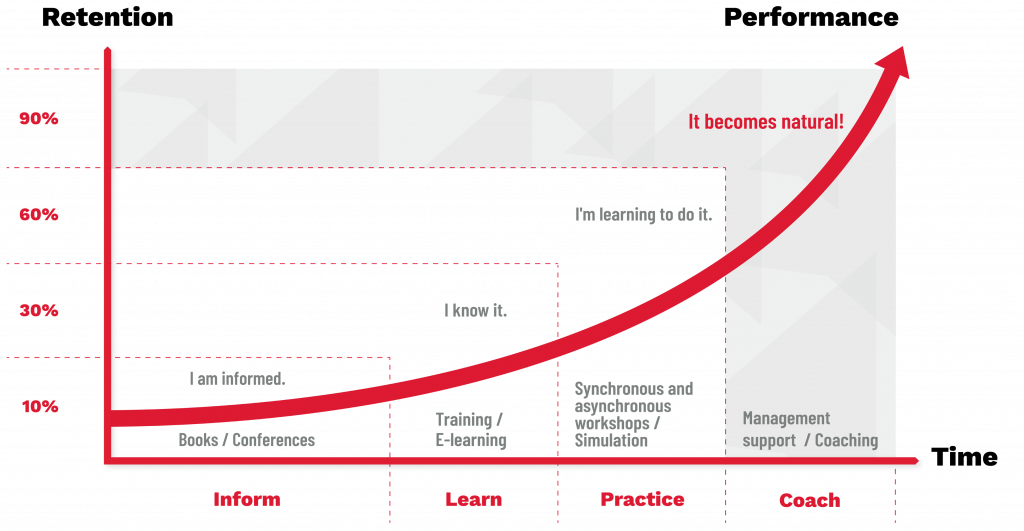
Fax or text? Is this still a debate? In training it is!
 Published by Halifax Consulting – 30 November 2023
Published by Halifax Consulting – 30 November 2023
The forgetting curve is like a headwind for us trainers. When the memory is already saturated with all the obligations of daily life, we need to find effective solutions to perfect our skills.
Distance learning offers a completely different pedagogy to face-to-face training. It has been tried and tested for over twenty years, and is all too often reduced to boring elearning or repetitive web classes. On the contrary, truly hybrid training – distance learning in small groups, accompanied by eLearning modules, asynchronous and individual exercises, tutored classes – enables participants to go deeper into each stage of their learning.
Take Halifax Consulting’s DEAL Method® negotiation training, for example. This 5-step training course aims to protect and even improve margins and conditions.
First of all, when delivering face-to-face training, you have to start by planning all the logistics.
It’s not uncommon for 25% to 50% of training costs to be earmarked for logistics. Consequently, we want to optimize logistics, not andragogy, so the training is given over full days, often consecutively. Participants must also complete all the e-learning modules before the training, i.e. 4 to 5 hours, and will be asked to master all the stages of negotiation in 2 days, then be able to apply it the very next day to generate the desired results, signing having protected their terms. The same applies to managers, who have to support their teams.
What’s at stake here is the short-, medium- and long-term outcome of the learning process. After all, we don’t just want to train sales teams to negotiate, we want to transform their approach and generate new reflexes. But how can we guarantee, for an approach such as The DEAL Method®, both comprehensive and high-level, that participants will remember everything we saw the day before… in the morning. Based on Edgar Dale’s studies, no matter how good a trainer you are, the forgetting curve will always work against you.
By the way, how many training courses have you given your teams in the past that are still being applied in full today?

On a sailboat, when the wind is head-on, you keep going by tacking. It takes longer, but you’re still moving forward. In training, the forgetting curve is always there!
If you opt for distance learning, you don’t have to deal with the logistics of travel, accommodation and food. So you won’t be burning energy that has no impact on the desired transformation. On the other hand, it will enable you to divide the same training into sequences, and each sequence will become a learning theme over a short period of time. A week, for example. So instead of going through all the e-Learning followed by twice 7 hours in the classroom, you’ll be able to go with training given in bite-sized chunks. One topic per week with one end of the eLearning and then a 3-hour period in a remote group dedicated to a single topic. Do you think the level of retention is different? You bet! We can then, between two stages, validate what we’ve learned through asynchronous exercises, test what we’ve seen in our ongoing customer negotiations and thus get feedback on our experiences at each stage.
So, to sum up the difference between face-to-face training and distance learning, I’d say that distance learning, with a “blended learning” andragogy, leads to over 70% retention and therefore concrete, observable changes. The vast majority of the time, the return on investment is instantaneous, because we can test the learning during our customer meetings for each stage (more sales, higher margins, better customer relations…).
The icing on the cake for distance learning:
- CO2 impact reduced by 95%;
- Every dollar invested goes into training.
On the other hand, I grant you, you lose the contact and the effect of being together. Which brings us to the most optimal solution, which is to hold a 3-hour face-to-face session, often the first and during a sales meeting, and the rest remotely. Here’s how to combine the best of both worlds for a lasting effect, in terms of learning, investment and the environment! But, as you know, there are always people who are nostalgic for the fax machine 😉
Did you like this article? Share it




